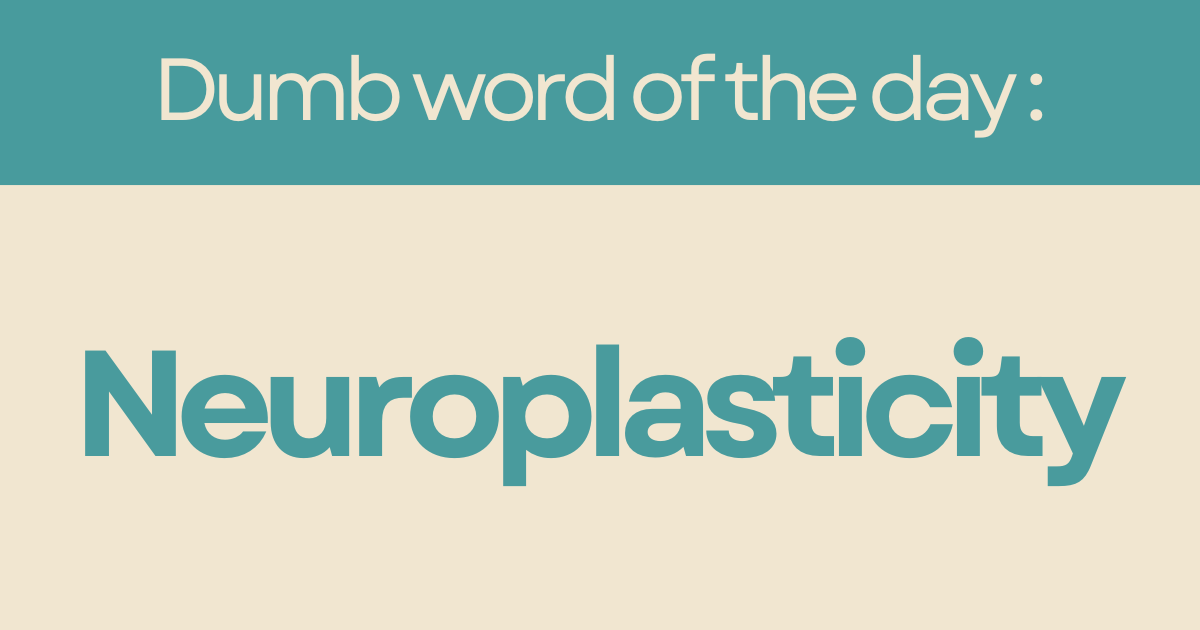
Listen now on Spotify and Apple Podcasts
The first wave of listeners is already chiming in. Add your voice, tap ⭐️⭐️⭐️⭐️⭐️ on Spotify or Apple, drop a quick line, and hit follow. Let’s show the world how smart dumb thinking can be.
👋 Hi fellow dumdums,

You’ve probably heard that mindfulness is good for you. Like yogurt, or stretching, or not texting your ex at 2 a.m. It allegedly reduces stress, improves happiness, increases focus, and may even prevent you from throwing a stapler across the room during a Zoom meeting.
But what is mindfulness, really? And why does it sound like something Gwyneth Paltrow would whisper into a $400 candle?
Let’s start here: Mindfulness is just paying attention to your own mind without instantly judging it.
That’s it.
It’s not about chanting or levitating or pretending you're above traffic.
It’s noticing your thoughts — even the stupid, annoying, or weird ones — and letting them hang around without swatting them like flies.
Meditation is just the practice of not losing your mind when you meet your mind.
Mindfulness and meditation are often used interchangeably, but here's the difference:
Meditation is like going to the gym for your brain.
Mindfulness is using the muscles afterward — like when someone cuts you in line at Trader Joe’s and you don’t punch them in the soul.
In a meditation, you practice sitting still while your brain throws a tantrum.
A real Greatest Hits album of mental nonsense:
“What’s for lunch?”
“Do I have early-onset dementia?”
“I should learn French.”
“I definitely have early-onset dementia.”
The trick is not to stop those thoughts. You can’t. You’re not a wizard.
The trick is to notice them and not immediately wrestle them to the ground or follow them into a pit of existential despair.
Why mindfulness works (science, not snake oil)
Let’s get nerdy for a moment.
Your brain, it turns out, is like a small child with a sugar high and access to your entire memory bank.
Mindfulness quiets the internal noise just enough so you can hear your thoughts without getting tackled by them.
According to some very serious people in lab coats, 8 weeks of mindfulness practice can literally change your brain.
More gray matter in the parts responsible for decision-making, emotion regulation, and learning.
Less activity in the parts that scream “YOU’RE A FAILURE” every time you accidentally send a Slack message to the wrong person.
This isn’t metaphor. This is neuroplasticity, a word that sounds made-up but isn’t.
Mindfulness doesn’t make your life better. It just stops you from making it worse.
People often think mindfulness means being calm all the time.
Nope. You can be mindfully pissed off. Mindfully heartbroken. Mindfully cleaning your cat’s puke off a duvet.
Mindfulness doesn’t fix your problems.
It just stops you from compulsively reacting to them like a squirrel on meth.
How to get started (no incense required)
Start with one minute of doing nothing.
That’s it. One minute.
Sit down. Close your eyes. Watch your thoughts tumble out like clowns from a tiny car.
Breathe.
Don’t fix. Don’t fight. Just notice.
Congratulations. You’re meditating.
(If you started planning dinner halfway through, you're doing it right.)
The Dumbify twist: be mindful of your dumb thoughts too
Mindfulness helps you hear what’s going on upstairs.
Dumbify says: “Hey. That weird idea? The one about opening a bakery that only sells crust? Don’t dismiss it. Get curious.”
Most of us are so quick to slap down anything that feels odd or unfinished or embarrassing.
But those are often the exact thoughts worth investigating.
Mindfulness helps you notice those ideas.
Dumbify asks you to hold them longer.
Walk around them. Try them on. Let them be awkward. Give them space to breathe.
That’s where the good stuff hides.
One last thought, before your brain wanders off again
Mindfulness is not about being perfectly present.
It’s about noticing when you’re not — and gently coming back.
Dumbify is not about forcing weird ideas.
It’s about recognizing when one appears, and having the guts (and the patience) to explore it.
Together, they make a great team:
Mindfulness opens the door.
Dumbify says, “Hey, come in. You want a snack?”
Neuroplasticity is the scientific term for your brain’s ability to rewire itself — like a living Etch A Sketch that never quite clears the board but keeps drawing over the mess and occasionally ends up with a masterpiece.
For years, scientists thought your brain was like a frozen ham: fully formed by adulthood, unchangeable, and best left wrapped in foil.
But now we know it’s more like Play-Doh with a Wi-Fi signal — constantly reshaping itself based on what you think, feel, do, and binge-watch.
Here’s where this connects to mindfulness and Dumbify:
Mindfulness is how you create the space for new patterns to form.
Dumbify is how you fill that space with weird, wonderful, unexpected ideas you’d normally never entertain.
So yes — entertaining that bizarre little idea about a vending machine for socks does matter.
Because every time you pause to stay curious instead of self-critical, you’re literally reshaping your brain to be more open, creative, and flexible.
Neuroplasticity isn’t just a fun word to say.
(It is, though. Try whispering it like it’s your lover’s name.)
It’s proof that your inner weirdo can grow stronger — with practice.
Thanks for exploring the value of mindful weirdness with me today!
🎤 YOUR TURN: Ever had a strange idea pop into your head—one you almost dismissed as too ridiculous, but followed anyway? What happened when you gave it space? I want to hear your “held onto the odd idea” moment. Best story wins a signed copy of Dumbify.
Stay curious (especially when it gets weird),
David
P.S. Know someone who overthinks their ideas to death? Forward this email—their next breakthrough might be hiding in the thought they almost didn’t have. 🌀





